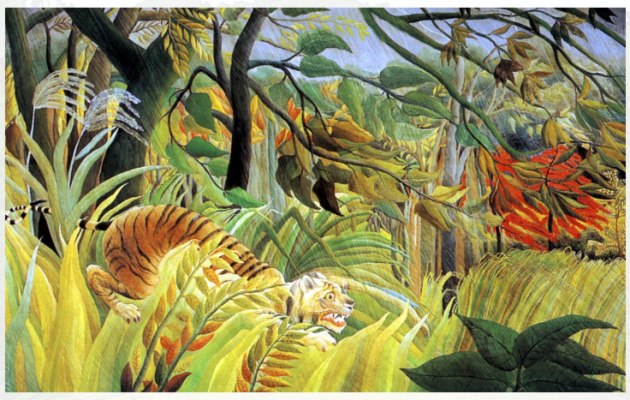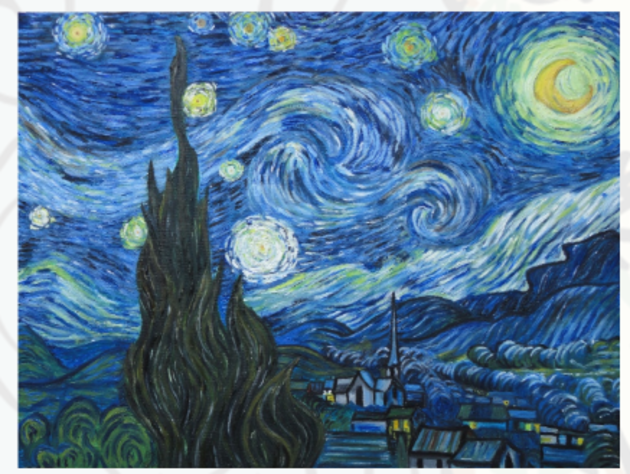

Post-Impressionist artists aimed to make art an emotional experience through the use of symbolism, colour and captivating forms.
Post-Impressionism is an exaggerated form of impressionism. These paintings focus on what the viewer might see if they only caught a glimpse of a scene. Post-Impressionist artists commonly used rural scenes and everyday subjects for their paintings in contrast to the high fashion urban scenes of impressionism.
Post-Impressionism started around 1885 and was commonly used in the artistic world until around 1914.
It was started by artists, Paul Cézanne, Paul Gauguin, Vincent van Gogh, Georges Seurat, Henri Toulouse-Lautrec, and Henri Rousseau who were aiming to shake up the art world.
Vincent van Gogh's Starry Night (1889) is one of the artists most famous paintings and is a well known example of post-impressionism.
Henri Rousseau's Tiger in a Tropical Storm - Surprised (1891) uses this abstract style of art where he doesn't paint things exactly as they look in real life. He had never travelled outside of France and his jungle is inspired by the Parisian botanical gardens.  Post-impressionism today is one of the most well-known and beloved styles of art.
Post-impressionism today is one of the most well-known and beloved styles of art.
 Home
Home  Membership
Membership  Customer Support
Customer Support  Create
Create  Blog
Blog 














